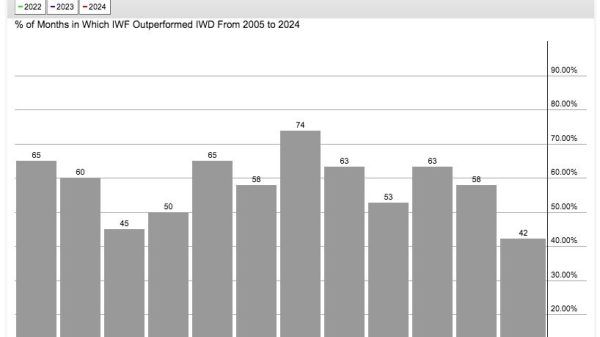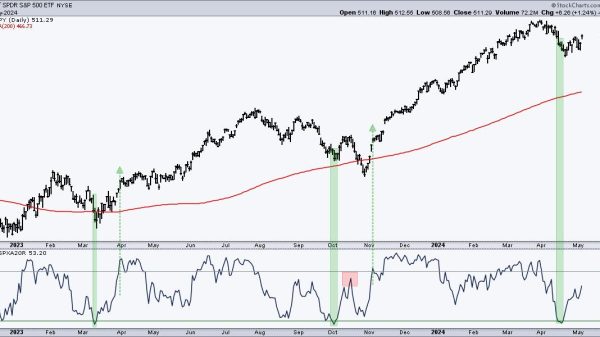Policymakers across the nation are concerned about the high costs of housing for moderate‐income families. One federal response to the problem is the low‐income housing tax credit (LIHTC), which provides income tax credits to developers of multifamily housing. Currently, Congress is considering expanding the LIHTC and adding a new middle‐income or workforce version of the credit.
I delivered these comments last Thursday to an American Enterprise Institute conference on the LIHTC. The conference included excellent presentations by Ed Pinto, Tobias Peter, Kevin Corinth, Ed Glaeser, and Howard Husock.
The LIHTC is a complex and inefficient solution to housing affordability. The tax credits crowd out market‐based housing, benefit financial middlemen more than low‐income tenants, generate fraud and corruption, and are less efficient than demand‐side housing aid or free markets. Expanding federal housing tax credits would be the opposite of evidence‐based policymaking.
Complexity
Governments impose many complex legal structures: income taxation, tax‐exempt bond rules, environmental rules, building codes, zoning, financial regulations, and dozens of subsidy structures such as Opportunity Zones and community block grants. The LIHTC is complex in itself, and it interacts with all these other complex structures.
How complex is the credit? The bible is the Novogradac 2023 LIHTC Handbook which is 1,798 pages in length. A single tax credit and almost 1,800 pages of rules and guidance!
The federal government apportions housing tax credits to the states, and the states use Qualified Allocation Plans (QAPs) to divvy them out to developers. QAPs are central planning. They micromanage apartment building construction through rules and point systems.
The Virginia QAP and QAP Manual together are 266 pages in length. Some of the complexities include:
- Rules for allocating credits to areas within Virginia.
- Points for favored neighborhood locations, such as near bus stations.
- Points for whether projects have minority and women subcontractors.
- Points for developers with experience, giving an advantage to insider firms.
- Rules for the financial structure and personnel of developers.
- Rules for interactions with other subsidies such as Opportunity Zones.
- Points for micromanaging housing unit design. For example, developers receive three points “if each full bathroom’s bath fans are wired to the primary bathroom light with a delayed timer, or continuous exhaust,” three points “if each full bathroom’s bath fans are equipped with a humidistat,” three points if interior doors are solid core, five points for community rooms with certain characteristics, and one point “if each unit has at least one USB charging port in the kitchen, living room, and all bedrooms.”
- Rules and points for faucets, shower heads, windows, energy sources, and other green‐related items.
- Rules and points for allowable costs, materials used, accessibility, and many other things.
The Virginia QAP lists 15 types of federal subsidy that LIHTC projects may receive. The Virginia housing agency must do a “Subsidy Layer Review” to ensure that the subsidies fit together within each project. The states must do detailed auditing of LIHTC projects because of fraud problems. There is a layer of federal LIHTC regulations on top of these state QAP rules. The IRS audit guide for the LIHTC is 350 pages in length. All this for one tax credit!
Housing developers need large bureaucracies and face delays in handling all the LIHTC rules. As a result, LIHTC projects cost substantially more to construct than market‐based projects. Then, after LIHTC projects get built, bureaucracies are needed for long‐term monitoring of the projects for tenant mix, income levels, and other items for 30 years.
Let me make a political point: Do the nominally conservative Republican members of Congress who support the LIHTC know that it is not a simple investment tax cut, but rather a top‐down regulatory scheme that imposes massive paperwork burdens on industry and centrally plans homes down to how many USB ports they have?
Corruption
The LIHTC is a vehicle for state and local government corruption, as we have seen in places such as California. In Dallas in 2019, the chair of the housing committee on the city council plead guilty to receiving $40,000 in bribes for trying to steer housing tax credits and other subsidies to a favored developer.
When the federal government gives handouts to state and local governments, it is a fuel for corruption. You see this with many federal programs, such as HUD’s community block grants. One argument against the LIHTC is that the federal government should not be exacerbating the persistent problem of local government corruption with developers.
Tax Reforms for Affordable Housing
I am against special breaks such as the LIHTC, which complicate the tax code. But there are pro‐market tax reforms that would boost multifamily housing investment.
- Reform Tax Depreciation Rules. Apartment buildings have lengthy 27.5‑year depreciation write‐off periods, which raises effective tax rates on investment. Some apartment building machinery and equipment has shorter depreciation lives that benefited from the 2017 tax bill’s expensing rules, which are now phasing out. Congress should bring back full expensing for machinery and equipment and slash depreciation lives for apartment buildings.
- Reduce High Property Taxes. Property taxes on apartment buildings are higher than on owner‐occupied homes. The Lincoln Land Institute surveys 50 US cities each year, and finds that effective tax rates on apartment buildings are 44 percent higher than on owner‐occupied homes. That is unfair and undermines multifamily investment. Cities should cut property taxes on apartment buildings.
Regulations Raise Costs and Reduce Innovation
Rather than micromanage multifamily development with the LIHTC, we need innovation in low‐cost housing production such as modular construction, tiny houses, and new materials. Regulations are the enemy of such innovations.
In a 2022 study, the trade associations NAHB and NMHC found that regulations raise costs of apartment building construction by 41 percent. Higher costs stem from constant changes to building codes, affordability mandates, land set‐asides, government delays, labor regulations, complex zoning approvals, unique development mandates, and developer fees. On top of that 41 percent regulatory cost, the study found that NIMBY battles add another 6 percent to development costs.
The study was based on a survey of multifamily developers. Half the developers said they would not build in places with inclusionary zoning mandates and 88 percent said they would not build in places with rent controls. The report concludes that “regulatory mandates discourage developers from building in the very marketplaces that have the greatest need for more housing.” Government solutions often backfire.
The Terner Center for Housing Innovation at Berkeley studies the costs of LIHTC projects. The center found that in 2019 prevailing wage laws in California increased the average cost of building LIHTC projects from about $400,000 per unit to about $500,000. LIHTC projects are high‐cost construction.
Here is a final point on regulation. Economic studies, such as a 2022 NBER study by Goolsbee and Syverson, note that construction industry productivity has been stagnant for decades. While total factor productivity has trended upward in the overall economy, productivity in construction has dipped since the 1970s. Economists do not know exactly why, but overregulation that stifles innovation is one likely cause. We are building homes roughly the same way we did 50 years ago. Manufactured products are far cheaper today than in the past, but home construction is more expensive. The low‐income housing tax credit compounds this regulatory cost problem.
To conclude, the way ahead should be deregulation, innovation, and lower costs, not more subsidies, higher costs, and central planning with tax‐credit programs.
The LIHTC is explored by Chris Edwards and Vanessa Calder in this study.






















